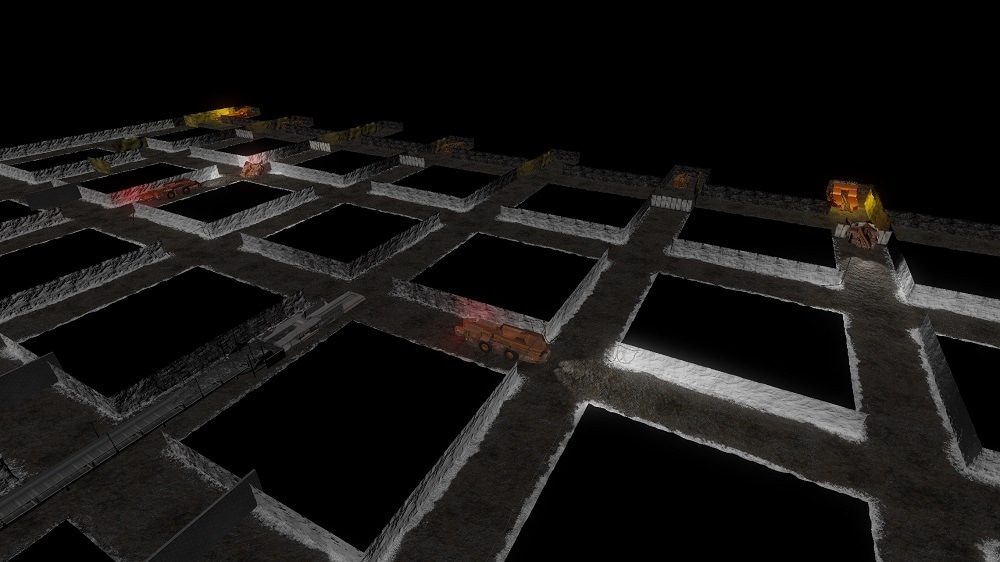Mining Project: Self-Escape from Underground Coal Mines Training Initiative
| Principal Investigator |
|
|---|---|
| Start Date | 10/1/2014 |
| End Date | 9/30/2018 |
| Objective |
To characterize competence in specific self-escape roles of underground mining personnel, identify potential gaps in existing self-escape training, and explore best practices to provide practical guidance to mine safety and health professionals. |
| Topic Area |
Research Summary
The objective of this project was to characterize competence in the specific self-escape roles of underground mining personnel, identify potential gaps in existing self-escape training, and explore best practices in emergency response training to provide practical guidance to mine safety and health professionals.
This project had five research aims, as follows:
- To identify self-escape knowledge, skills, abilities and other attributes (KSAOs) to characterize competence in the task of self-escape for rank-and-file mineworkers and those in leadership positions (mine management, responsible persons (RPs) and escape group leaders (EGLs).
- To prioritize the knowledge, skills, and abilities (KSAs) that are critical to effective self-escape and amenable to training interventions.
- To identify potential gaps in prioritized self-escape competencies and identify strategies to fill those gaps.
- To create modifiable immersive mine environments suitable for self-escape training and behavioral research activities.
- To provide a standardized evidence-based framework for self-escape competency training and assessment to the mining industry.

In response to recommendations set forth by the National Academy of Sciences, this work was conducted through a combination of in-house efforts and contract work. Project activities were performed at NIOSH facilities, mine sites, and other training facilities.
As a part of the formative effort, research activities included formal hierarchical and cognitive task analyses to identify KSAs across self-escape roles, the exploration and characterization of specific self-escape training elements required by law (e.g., annual refresher and responsible person training), the identification of existing gaps in miner training and competence, and reviews of the knowledge base related to current decision science and emergency training in international mining and other high-risk industries. Finally, mine emergency subject matter experts assisted NIOSH researchers in the validation and translation of the findings to provide practical guidance for the mining industry.
Parallel to completing the tasks related to research aims 1-3, researchers were also preparing the Virtual Immersion and Simulation Laboratory (VISLab) for future behavioral research activities by developing a flexible virtual underground coal mine that can be modified based on stakeholder needs. The flexibility of the virtual environment is suitable for experimental work to study Mining Program research topics such as situational awareness, hazard recognition, and decision-making. The virtual mining environment, VR Mine, can also be used as a communication tool to visually represent self-escape concepts.
The outcomes of these activities have been combined to produce a validated framework and enhanced self-escape training and assessment content that can be used by mine safety and health professionals and/or tested in a controlled research setting. The outputs of this work are expected to contribute to increased standardization of effective self-escape training and assessment and a more prepared workforce. They could also potentially inform legislative and policy discussions related to self-escape training requirements in the United States mining industry.
Related Resources
BG 4 Benching Trainer Software
NIOSH Mine Emergency Escape Simulation Technology Available for Developers
Underground Coal Mine Map Reading Training
- The ABCs of KSAs
- Advancing Self-escape Training: A Needs Analysis Based on the National Academy of Sciences Report "Improving Self-escape from Underground Coal Mines"
- Emergency Decision-making: Underground Coal Mine Escape Scenarios - 1.0
- Emerging Technologies: Aiding Responders in Mine Emergencies and During the Escape From Smoke-Filled Passageways
- Knowledge Management and Transfer for Mine Emergency Response
- Mine Rescue and Response
- Mine Rescue Training Facility Inventory - Compendium of Ideas to Improve US Coal Mine Rescue Training
- Probability of Making a Successful Mine Escape While Wearing a Self-Contained Self-Rescuer
- Self-escape Core Competency Profile: Guidance for Improving Underground Coal Miners' Self-escape Competency
- Using Performance Management Strategies to Improve Mine Emergency Training and Preparedness